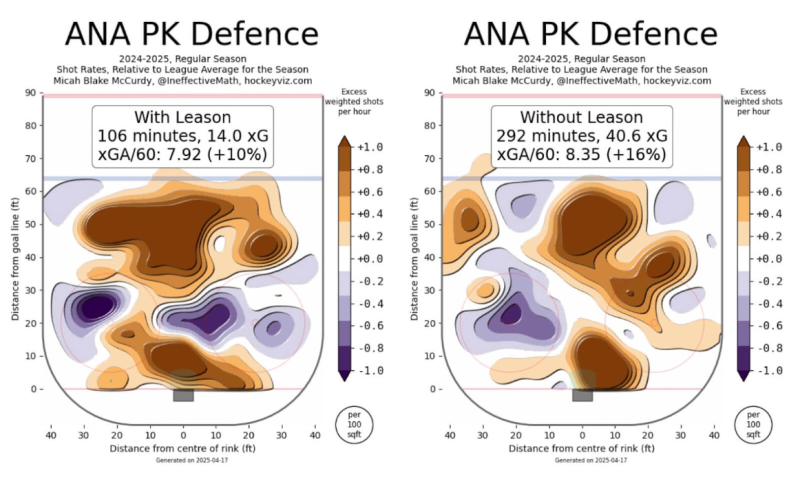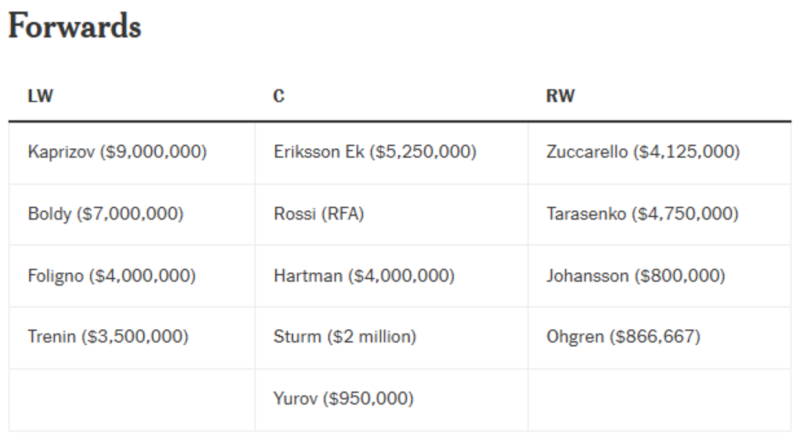With the preseason rapidly approaching, the Minnesota Wild have added to their training camp roster depth by signing winger Brett Leason on a professional tryout contract (PTO). A PTO is a short-term deal that lets unsigned players audition for a roster spot.
PTO signings may not seem like huge news at first glance, but it’s a fairly standard path to making an NHL roster. Before the 2024-25 season, 39 players signed PTOs in training camp. Twelve of them earned contracts from their tryout.
Can Leason be part of this year’s class of tryouts to earn a contract? He possesses some intriguing attributes that could make him appealing to the Wild.
Leason has spent the last three seasons with the Anaheim Ducks after the Washington Capitals drafted him 56th overall in 2019. He’s played 220 NHL games, amassing 25 goals and 29 assists.
The forward’s size is his most visible asset. Leason is listed at 6’5”, 220 lbs. Leason uses his size well, particularly in the offensive zone, where he’s good at protecting the puck and maintaining possession along the boards. Leason pairs those attributes with good skating for his size, a nice shot release, and surprisingly quick hands when he’s most effective.
Take a look at this goal from last year, which showcases some of his skills.
Larson’s ability to cleanly receive the pass, stick handle through a couple of obstacles, and then get the puck back in at a good shooting angle is impressive.
While he has the skills to be an offensive asset, Leason can struggle to put that together to produce actual results. He will go through long periods of time where he’s quiet. For example, Leason didn’t score a goal in 32 straight games last season in Anaheim.
However, his goal-scoring numbers should improve a bit wherever he plays next, given that his 6.3% shooting percentage was way down from his 12.1% the season before and 11.8% in the 2022-23 season.
Even if he produces more, that isn’t why he’s appealing to the Wild. The main reason Minnesota probably brought him in is his experience on the penalty kill. Leason has been a penalty kill specialist the last two seasons in Anaheim, with a 37% PK deployment rate.
Not only did Anaheim utilize him frequently on the penalty kill, but the team performed better with him on the ice than off it in terms of expected goals against per 60 minutes.

(Source: The Athletic)
The Wild need additional help on the penalty kill, given their well-documented struggles while short-handed in recent years. Minnesota’s 72.4% success rate last season was third-worst in the NHL.
Minnesota has continued to bring in new players in hopes of addressing its penalty-killing woes. They notably signed Yakov Trenin last year and brought in Nico Sturm this offseason. Leason may be another piece of organizational depth to address that problem.
While Leason is known for his size and defensive game, particularly on the penalty kill, he doesn’t play a very physical game in terms of hitting. Hitting stats can be unreliable, but his career high in logged hits is just 80 in 68 games during the 2023-24 season. If Minnesota is looking for a game-breaking physical force, Leason won’t provide that.
Still, Leason should provide enough attributes to at least be a player to watch throughout the Wild’s preseason. He has NHL experience, gives the lineup some size, and fills a crucial area of need as a penalty killer. While he could be an interesting option for the team, finding a spot for him is a more difficult task.
Let’s look at a projected roster for the Wild to try to figure out if there’s a place for Leason. Michael Russo put together this projected lineup in July, so Marco Rossi is still listed as an RFA, but it’s a good place to start.

(Source: The Athletic)
Any possibility of Leason playing in the top six is far-fetched. He isn’t that type of player, and if the Wild find him in their top-six, it means they’ve had a lot of injuries.
Marcus Foligno and Marcus Johansson are trusted veterans who seem fairly ingrained in the team. Johansson could theoretically come out of the lineup. However, it seems more likely in that scenario Hartman would take his spot on the wing to make room for Danila Yurov, who’s expected to get a shot in the NHL.
Leason fills essentially the same role as Trenin as a big penalty killer. Still, Trenin is more physical and experienced, and the team has more invested in his success, given his contract.
Finally, Liam Ohgren is another player who should be getting a serious shot to serve a role on the team this season. He would have to play poorly in the preseason and the early regular season to lose that spot.
That doesn’t even mention Minnesota’s host of NHL veterans and prospects knocking on the door who are also hoping to make that roster. That includes players like Nicolas Aube-Kubel, Vinnie Hinostroza, Tyler Pitlick, Hunter Haight, and Riley Heidt.
With all that competition, Brett Leason’s path to being an immediate part of the roster seems like a long shot. Still, he could be a valuable addition to Minnesota’s organizational depth. For example, Leason could be an excellent option to fill in for Trenin if he gets hurt.
If Leason fits in well with the Wild, he can still fill a role. Is it likely that he plays 82 games for the Wild? Even in a best-case scenario for him, probably not. But it’s conceivable to see him seeing action in St. Paul when the team experiences injuries or needs a new look during a slump.
